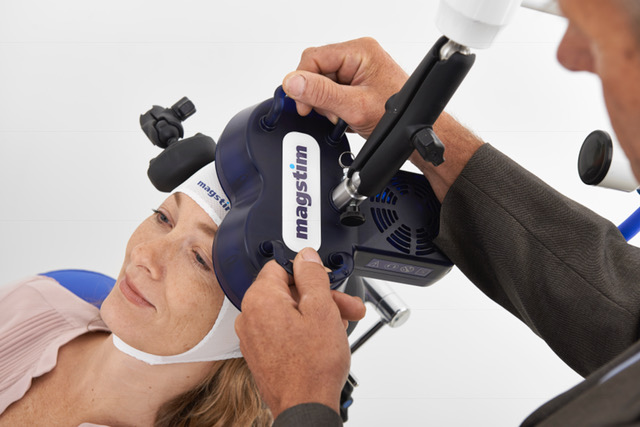Understanding Midlife Depression
The first episode of mood disorders like bipolar illness and major depressive disorder typically occurs in adolescence or early adulthood. However many adults in their 30s, 40s, 50s or older begin to struggle with depression in new ways as an older adult.
Medical problems and the losses we experience as we age can affect how we view ourselves and how we relate to the world around us. These changes can affect our mood and mental health.
Common Causes of Depression in Midlife
Depression can be caused by many life situations, some of the most common being medical problems, personal losses, changing relationships with children and parents. These can affect how we view ourselves and relate to the world around us.

Medical problems, personal loss, changing relationships with children and parents can affect how we view ourselves and relate to the world around us.
Signs & Symptoms of Midlife Depression
For adults with a mood disorder, symptoms of depression are more than just a “midlife crisis.” More than behavior that seems age-inappropriate or “feeling low,” a person with depression can feel sad, have low energy and motivation, lose interest in activities and social relationships, and have trouble sleeping. These symptoms may be disabling and affect a person’s ability to work or function day-to-day. Most concerning, sometimes those symptoms can result in thoughts about suicide.
How To Get Help For Depression
Some adults never received a diagnosis or treatment during earlier episodes of their illness. Their symptoms or behavior may have been attributed to something else, like a rocky transition to college, a stressful job, or a turbulent relationship.
For these adults, the comprehensive diagnostic process we implement at Skyland Trail is critical to an accurate diagnosis. We take a deep dive into each patient’s family and medical history to get a clear picture of his or her symptoms and mood episodes over time. If a person ever has had onemanic episode, the diagnosis is likely bipolar illness, which necessitates a different treatment approach and medication strategy than unipolar depression. A thorough diagnostic interview can bring new information to light and improve treatment outcomes.
If we discover that a patient does not have a history of depressive or manic episodes, the thorough medical diagnostic exam patients receive in our wellness clinic becomes very important. If a person has a first mood episode after age 40 (i.e. no prior depressive or manic episodes), it more likely is linked to a medical illness like hypothyroidism or pancreatic cancer. We conduct specialized lab tests and may recommend additional testing – like head imaging, a sleep study, or an electroencephalogram (EEG) – to rule out common medical illnesses and to help patients seek appropriate treatment when necessary. We find that 8 to 10 percent of Skyland Trail patients have some underlying medical problem that could cause or contribute to their depression.

If a person has a first mood episode after age 40, it may be linked to a medical illness.
Other patients have managed a diagnosis like bipolar illness or major depression for many years – perhaps successfully – but a major life change or loss may precipitate an increase in their symptoms.
While we hopefully gain experience and deeper relationships over our lifetimes, we also have to cope with aging and loss. We may lose physical qualities that challenge how we perceive our strengths or value. We may lose important relationships through death or divorce, or lose jobs that helped us define our worth to our community or family. Any of these significant events can lead to an increase in symptoms or affect someone’s ability to cope effectively with negative thoughts and low moods.
Fortunately treatment for depression can be very effective. Combined with appropriate medication, Cognitive Behavioral Therapy (CBT) is the best evidence-based treatment for depression. And, as compared to younger adults, older adults often find CBT concepts easier to grasp and use successfully.
With guidance from our CBT experts, our clients can learn new coping skills and re-evaluate how their thoughts, mood, and behaviors are connected. Over time, patients learn how, by changing one, they can affect the others. For example, consider the process for coping with losing your job. If you can accept the loss and refocus your thoughts on potential new opportunities, you may be able to improve your mood and find more motivation for taking steps toward that new goal.
How TMS Can Help with Treatment-Resistant Depression
Older adults also can benefit from other proven clinical treatments. While some older adults may have tried several medications without relief, there are some classes of medications often not used with younger adults that may be appropriate. Augmentation strategies – adding a supplement or a stimulant – may also improve success.

TMS is an FDA-approved noninvasive treatment for adults with treatment-resistant depression.
For treatment-resistant depression – meaning a person’s depression has not responded to three adequate trials of medications – electroconvulsive therapy (ECT) or transcranial magnetic stimulation (TMS) may be appropriate.
In fact, more than 80 percent of patients with treatment-resistant depression who receive ECT reach remission. ECT often is under-utilized due to its historical negative stigma, but today’s ECT actually is a very effective procedure with minimal discomfort and side effects.
TMS is an FDA-approved noninvasive treatment for adults with depression. TMS uses a low intensity magnetic pulse to create an electrical current in the brain. The electrical current is narrowly targeted to stimulate the left prefrontal cortex, which is implicated in depression. Multiple studies have indicated that TMS is an effective treatment for major depressive disorder with low risks and minimal side effects.
Residential Treatment Programs for Depression
While much of the current conversation about mental health treatment focuses on college students and young adults, accessing and engaging in an effective treatment program is important for adults of any age. In 2013, the highest suicide rate was among people 45 to 64 years old, and depression is the second leading cause of disability worldwide. These statistics do not have to apply to you or your loved one. Effective treatment is available and healing is possible.
